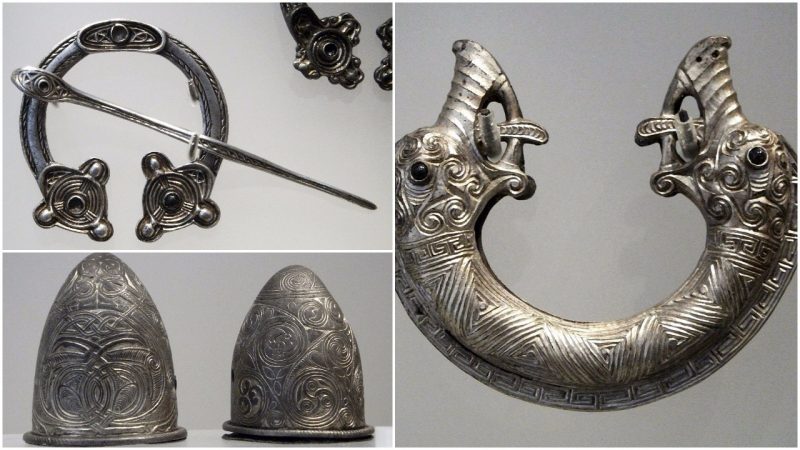The St Ninian’s Isle Treasure was discovered under a cross-marked slab in the floor of the early St. Ninian’s church, on 4 July 1958 by a local schoolboy, Douglas Coutts. Coutts was helping visiting archaeologists led by Professor A. C. O’Dell of Aberdeen University at a dig on the isle. The silver bowls, jewellery and other pieces are believed to date from approx. 800 AD.
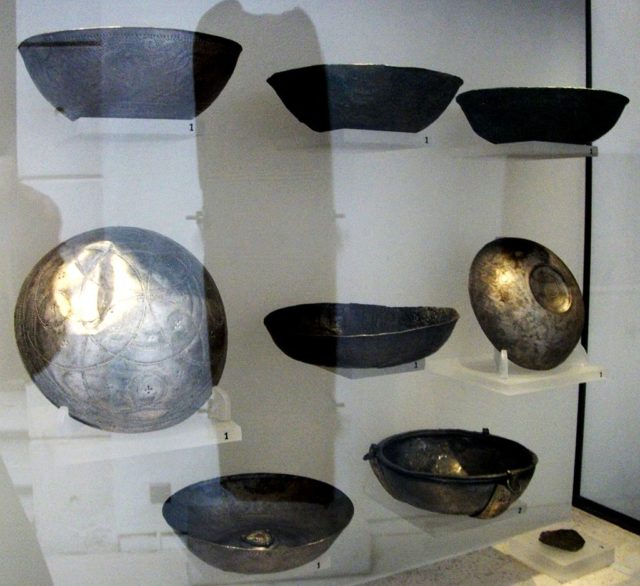
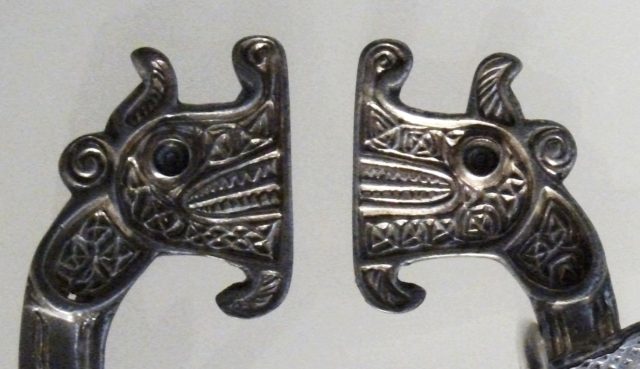
Professor O’Dell, writing in December 1959 in Antiquity magazine, recounts that:
- “… the church on this site was described early in the 18th century as being still venerated by local people although it had been abandoned at the Reformation in favour of a more central parish church … … from the sandy spit, which has formed between the mainland and the isle, gales have carried sand and this, together with the accretion of a graveyard in use until c.1850, buried the church remains and all knowledge of its exact location had vanished from living memory … At the occasion of the first Viking Congress in 1951 Dr W. Douglas Simpson suggested a search might prove rewarding and this was undertaken in 1955 by a party of my students under my direction.
- The results in this and succeeding years have exceeded expectations. … The medieval building with its massive mortared walls, main altar and a side altar had made the excavation noteworthy before 4 July 1958, when the hoard was discovered.
- Close to the southern chancel arch foundation, and missed by inches by later burials, was found a broken sandstone slab, 10.5 in. by 15 in., lightly inscribed with a cross and, below this, was the hoard. It had been contained in a larch box of which a few splinters, impregnated with metal salts, had escaped decay. The bowls were upside down and the brooches and other objects tangled together, showing it has been hurriedly carried and buried with the top down. In with the objects was the porpoise jawbone and this, the only non-metallic object, is strong evidence of its ecclesiastical connection, although the brooches suggest a secular link …
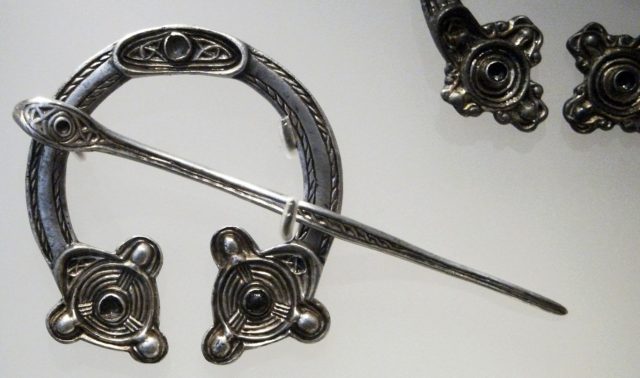
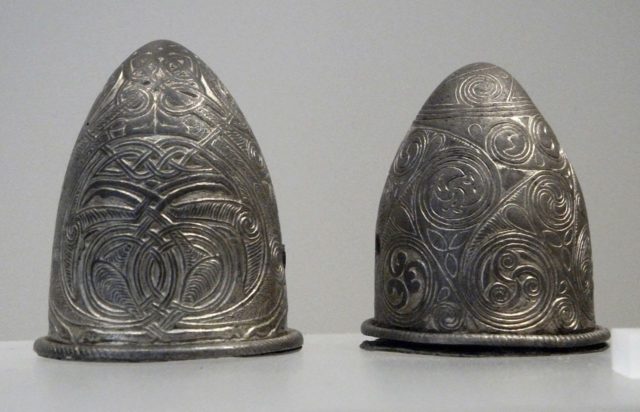

The treasure is the best survival of Scottish silver metalwork from the period, some pieces gilded. As Prof. O’Dell says, there were pieces for secular use such as a series of different penannular brooches (some of them probably as unfinished half-ware) and different chapes from sword scabbards, pieces which might have been used for religious ceremonies and rituals like the bowls, spoons, and “thimbles” and all of those joined with some pieces of unsure meanings like the heavy ring chains or collars which are referred to as “power symbols of Pictish chieftains” by some scholars.
The brooches show a variety of typical Pictish forms, with both animal-head and lobed geometrical forms of terminal. Two of the scabbard chapes and a sword pommel appear to be Anglo-Saxon pieces, probably made in Mercia in the late 8th century; one has an inscription with a prayer in Old English. One of the mounts has a triple spiral design. We know of exchanges of gifts between Anglo-Saxon and Pictish rulers, and generally “weapons are among the objects which traveled most widely in the early medieval period”.
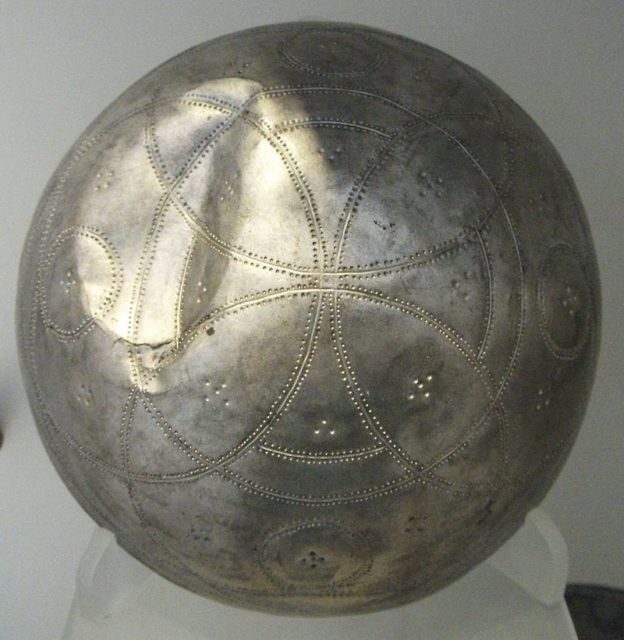
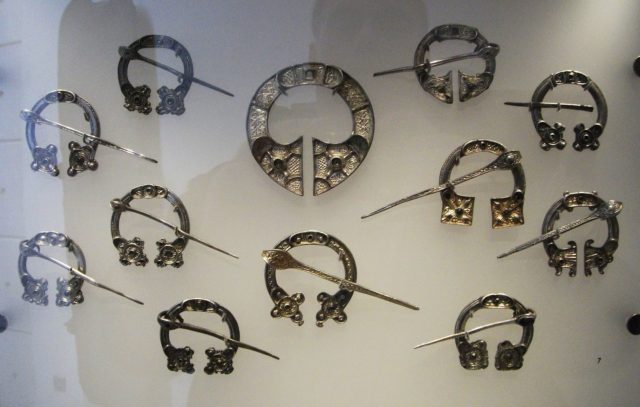
The treasure was donated to the National Museum of Antiquities of Scotland (NMAS) in 1965-6 and is currently in the Museum of Scotland in Edinburgh, whilst replicas are held by the Shetland Museum.
